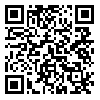Volume 3 - Vol 5,Sup. 1, MONICA project
ijdld 2004, 3 - Vol 5,Sup. 1, MONICA project: 5-10 |
Back to browse issues page
Download citation:
BibTeX | RIS | EndNote | Medlars | ProCite | Reference Manager | RefWorks
Send citation to:



BibTeX | RIS | EndNote | Medlars | ProCite | Reference Manager | RefWorks
Send citation to:
Shahandeh K, Majdzadeh S, Kamali S, Pourmalek F, JamshidI E, Ghajarieh Sepanlou S et al . ANALYSIS OF DEMOGRAPHIC AND SOCIOECONOMIC DETERMINANTS OF 17th ZONE TEHRAN: TEHRAN POPULATION LAB REGION. ijdld 2004; 3 :5-10
URL: http://ijdld.tums.ac.ir/article-1-5057-en.html
URL: http://ijdld.tums.ac.ir/article-1-5057-en.html
KH Shahandeh * 
 , SR Majdzadeh
, SR Majdzadeh 
 , SH Kamali
, SH Kamali 
 , F Pourmalek
, F Pourmalek 
 , E JamshidI
, E JamshidI 
 , S Ghajarieh Sepanlou
, S Ghajarieh Sepanlou 
 , R Heshmat
, R Heshmat 


 , SR Majdzadeh
, SR Majdzadeh 
 , SH Kamali
, SH Kamali 
 , F Pourmalek
, F Pourmalek 
 , E JamshidI
, E JamshidI 
 , S Ghajarieh Sepanlou
, S Ghajarieh Sepanlou 
 , R Heshmat
, R Heshmat 

Abstract: (6354 Views)
Introduction: The human being is part of its surrounding socio-economic framework. He is affected by the environment and actively affects it. Ignoring the socio-economic dimensions of health leads to the failure of health promotion programs and widens the inequity in the health status of different groups in the society. The aim of this study is to identify the socio-economic and demographic status of the inhabitants in 17th zone of Tehran Methods: A combination of qualitative and quantitative approaches was used in this study. A crosssectional descriptive study was carried out in population research Center of Tehran University of Medical Sciences (TUMS) with a sample containing 1121 households. They were chosen by random cluster sampling. Data was gathered using the World Health Survey questionnaire of WHO. Construct validity, and test-retest reliability and internal consistency of the questionnaires were already approved. The SEAGA tools, which are classified as Rapid Appraisal (RA) methods were used to complete the community profile .Techniques such as direct observation, Semi-structured interview with key informants, field notes, social map, and trend line were devised to identify community profile. The method of triangulation was used to validate the data. Results: Data analysis showed means of age was 27/9 years. The average size of the household was 4.23. 47.5% of the respondents were unmarried. The Majority of participants (30/7%) have been qualified at high school level. The dominant ethnic group was Azari (57/8%). All of them were Moslems. The majority are self-employed (11/9%). The qualitative studies showed that district one is the economic core of the area. Economical heterogeneity in three districts of 17th zone was evident. Social problems were reported as unemployment, drug abuse, violence and aggressive behavior and so on. Conclusion: The variety of socio-economic problems among inhabitants in 17th zone of Tehran represents this area as a problematic community. Capacity building and providing proper background for community participation in solving its own health problems can be an effective approach towards sustainable development. Total reliance on the health sector to solve the numerous problems of this area will not be successful as inter-sectoral collaboration and community participation are mandatory requirements of this process
Keywords: Socio economic determinants, SEAGA (Socio-economic and Gender Analysis), Rapid Appraisal (RA), World Health Survey
| Rights and permissions | |
 |
This work is licensed under a Creative Commons Attribution-NonCommercial 4.0 International License. |



